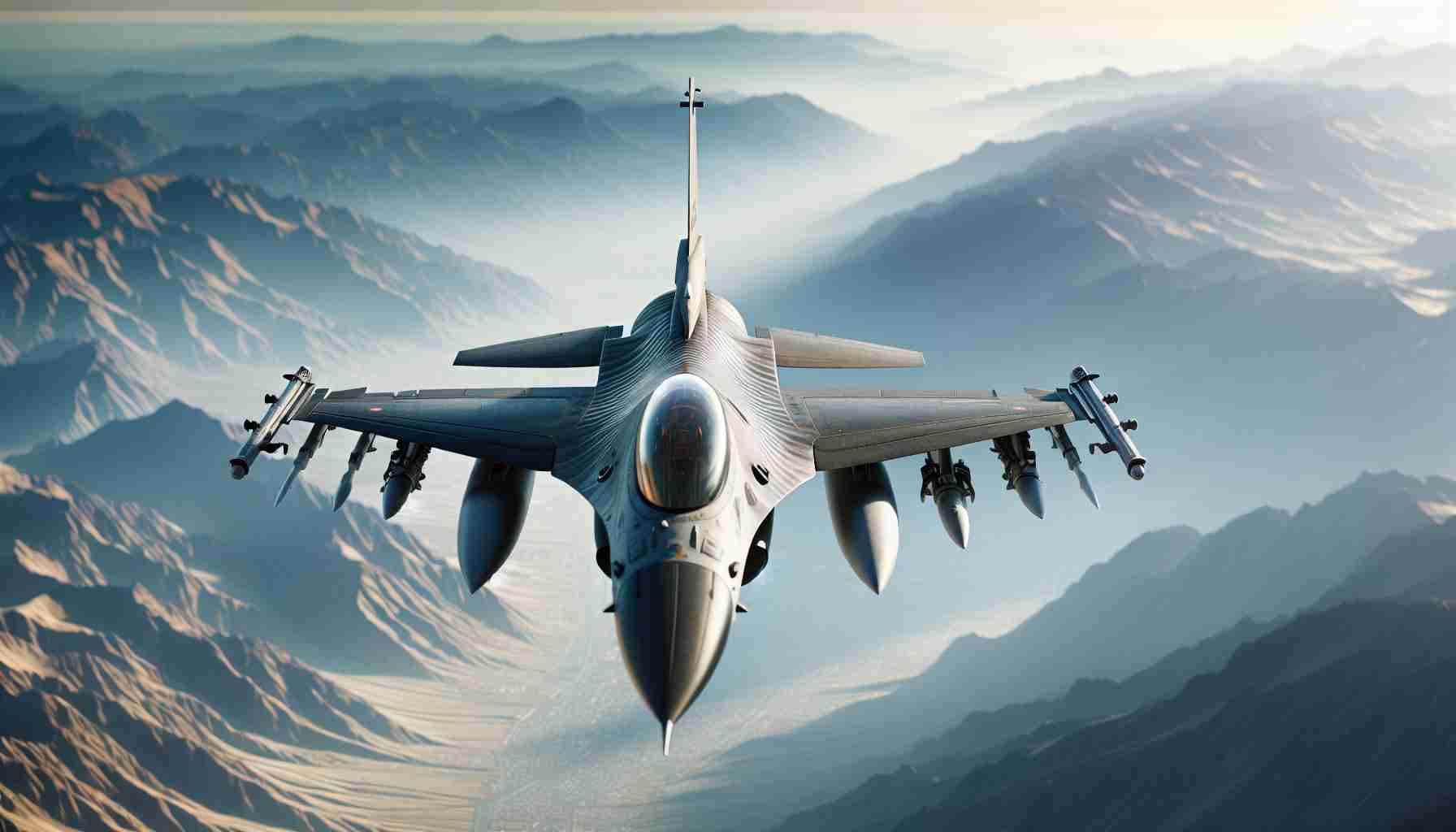In a significant modernization move, the U.S. Air Force is transforming its F-16 Block 40/42 fighter jets by integrating advanced Israeli technology. This upgrade aims to enhance pilot awareness and combat effectiveness by replacing older head-up displays (HUDs) with the innovative Wide-Angle Conventional Head-Up Display (WACHUD) from Elbit Systems of America, a subsidiary of Israel’s Elbit Systems.
With a contract valued at nearly $90 million, Elbit Systems will introduce the state-of-the-art WACHUD in place of traditional, smaller field-of-view HUDs. This cutting-edge system provides a broader, high-resolution display that enhances pilots’ situational awareness without requiring significant cockpit alterations. WACHUD efficiently integrates with existing F-16 cockpit layouts, making the transition smooth and minimizing aircraft downtime.
The enhanced HUD system significantly improves pilots’ operational efficiency by offering a comprehensive view of the battlespace. It interfaces seamlessly with advanced sensors and mission systems, displaying crucial information such as weapon status, targeting data, and navigation details directly in the pilots’ line of sight. This integration prioritizes critical information, easing cognitive load and enabling pilots to make rapid decisions.
Additionally, the WACHUD system is designed to work in harmony with helmet-mounted displays and night vision goggles, providing F-16 pilots with consistent access to vital data even during complex missions. Tailored to withstand the harsh conditions of military operations, WACHUD ensures durability and reduces maintenance requirements, which extend the operational lifespan of the F-16 Block 40/42 fleet.
This integration marks a strategic step in keeping the F-16 competitive and ready for future challenges, bridging the gap between this legacy model and modern fifth-generation fighters. By adopting WACHUD, the U.S. Air Force equips its pilots with advanced tools to succeed in high-stakes combat environments, reinforcing its air combat superiority.
Revolutionary HUD Innovation: How Israeli Tech Is Shaping the Future of Air Combat
The recent news of the U.S. Air Force integrating advanced Israeli technology into its F-16 Block 40/42 fighter jets marks a pivotal development in military aviation. Yet, this upgrade extends beyond just military applications; it has broader implications for the evolution of human-machine interfaces and cognitive technologies.
Impacts on Human-Machine Interaction
The implementation of the Wide-Angle Conventional Head-Up Display (WACHUD) from Elbit Systems of America represents a leap in how pilots interact with their aircraft. The seamless integration and enhanced situational awareness it provides underline a significant shift towards more intuitive and less intrusive technology interfaces. As WACHUD allows pilots to process critical data without diverting their focus from the mission, it reduces cognitive overload and enhances decision-making speed.
Such advancements have promising consequences for developing new technologies in civilian sectors. For example, the automotive industry is keenly observing these innovations for potential applications in augmented reality (AR) HUDs for cars, enhancing driver safety and awareness similarly to aviation systems.
Controversies and Challenges
Despite the benefits, there are challenges and controversies linked with such military collaborations. The integration of foreign military technology into U.S. defense systems often sparks debates over security, dependency, and the implications of using overseas vendors for critical components. Trust and reliability in international partnerships remain central to discussions, considering the geopolitical landscape.
Furthermore, the move raises ethical questions about how military tech advancements push the boundaries of autonomous decision-making, potentially minimizing human control over combat outcomes.
Advantages and Disadvantages
Advantages:
– Enhanced Situational Awareness: Offers a broad, high-resolution view making information easier for pilots to process rapidly.
– Integration with Existing Systems: Minimal cockpit or software modifications required, reducing costs and time.
– Durability and Compatibility: Designed to work with other systems like night vision goggles, ensuring consistent data access across different scenarios.
Disadvantages:
– High Initial Costs: Although it saves on operational costs and maintenance, the upfront investment is significant.
– Potential Overreliance on Technology: With enhanced systems, there may be a risk of pilots becoming over-reliant on technology, potentially impacting traditional piloting skills.
– Security Concerns: Using technology developed by foreign entities could present challenges related to cybersecurity and strategic control.
What Does the Future Hold?
Could innovations like WACHUD revolutionize other fields? Indeed, as industries move towards augmented and virtual reality technologies, the lessons from military HUD advancements will likely influence the design of next-generation consumer and professional tech solutions. The focus on minimizing cognitive load while maximizing efficiency is a principle that transcends military applications, promising a future where human-machine interactions become more natural and less obtrusive.
For further exploration of similar technology advancements, you might visit domains such as boeing.com or lockheedmartin.com to investigate how other pioneers are transforming aerospace technologies.







